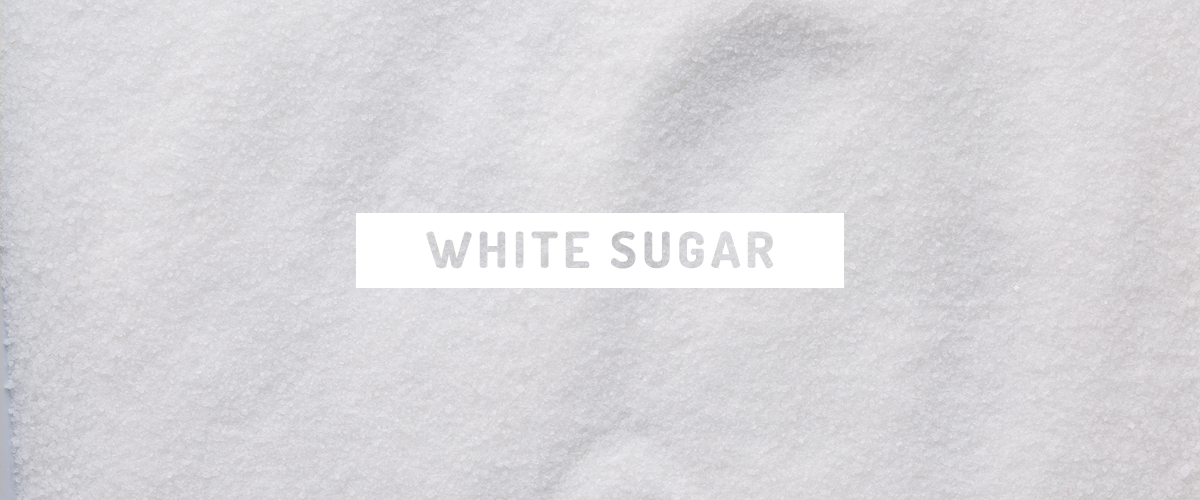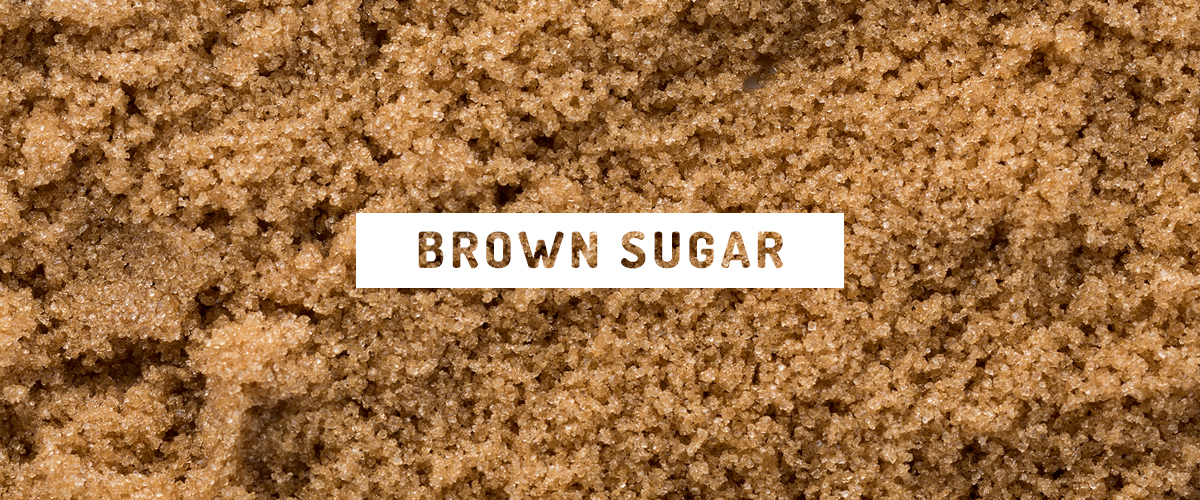We really are living the sweet life. From the bake sales and birthday cakes so common in childhood to the invention of the blended coffee beverage that got us through college, and now the foodie dessert craze that has many waiting in line for cupcakes and cronuts, the sugar train has stalked us at nearly every stop along the way.
In fact, it’s said that, on average, Americans take in nearly 66 pounds of sugar over the course of one year. That’s literally like eating a sprinkle-covered fourth grader every 12 months.
While some researchers have made the adamant claim that sugar, and sugar alone, is behind the rising rates of obesity and heart disease in this country, others say that perhaps sugar is not the villain it’s portrayed to be—depending on which kind you eat.
Today, sugar comes in so many forms that there would almost be too many to count if they were all put into one lineup. However, there are two main kinds that get the most attention—brown sugar and white sugar. But, does one really have an advantage over the other? We stacked them up to see how they compare in both nutrition and in our favorite foods.
White sugar
White sugar, also called sucrose, is a sweetener that comes from either sugar beets or sugarcane. It’s made by filtering the liquids of the plant and then boiling them into a thick syrup. As it dries it forms sugar crystals, which are refined to remove the natural molasses, resulting in a colorless appearance. When it’s produced from sugar beets, a non-chemical diffuser is used to achieve the final product; with sugarcane, granular carbon (or even controversial animal bone char) can be used to bleach it.
White sugar yields a dry and grainy texture and generally has a sweeter taste. Because of this, it’s easier to package and also will not interfere with the overall texture of a recipe. Its composition also makes it ideal for dissolving in drinks and sauces.
Types of white sugar
The incredibly popular white sugar has a number of different variations, which primarily revolve around the texture and main uses of the product:
- Normal sugar: Referred to as normal or “regular” because it is the most common form living in the sugar bowl and on store shelves, and also the most frequently used in baked goods and commercial products.
- Powdered sugar: Also known as confectioners sugar, this type is very finely textured and mainly used for the “sugar on top,” whether that’s a powdered dusting, icing, or whipped cream.
- Coarse sugar: Here, the crystal is larger than in most other sugars, which becomes an advantage for applications in confectionery goods, fondants, and even some liquors.
Nutrition of white sugar
White sugar is 100 percent carbohydrates. It contains no minerals, vitamins, protein, or good fatty acids. However, being a carb, it delivers a quick boost of energy to the body. While that may be good before a heavy duty workout, overdoing sugar in everyday life can also lead to regular “sugar crashes,” or a more dangerous sugar addiction.
Recent research suggests that when sugar intake becomes chronically excessive, as it is currently among a significant portion of the American population, the addictive qualities are strong and similar to other addictive substances.—Courier-Journal
So, while naturally occurring sugars (like the fructose in fruits and vegetables and lactose in milk) are needed by the body to function, many processed foods are criticized for overdoing it with high concentrations of white sugar that keep us coming back for more.
Eating an excessive amount of added sugar, such as refined white sugar, may also lead to long-term complications and risks for heart disease. A 15-year study showed that participants who took in at least a fourth of their calories from added sugar and sweeteners were twice as likely to develop the potentially life-threatening condition.
One of the major concerns, up until now, is that there has not been enough information geared to the public on what amounts of “natural” and “added” sugars are in food. (It’s estimated that of the 600,000 food products for sale in this country, 80 percent have some amount of added sugar.) While the American Heart Association has provided a resource to spell it out more clearly, the Food and Drug Administration is going a step further, requiring all food labels to include a line for added sugars by July of 2018. According to these guidelines, only 50 grams of added sugar should be consumed per day, so moderation is very much still key.
Foods made with white sugar
Although there are limits to how much you should take in, the good news is you can still have the sweet stuff—which is good since it’s in just about everything we love to eat. Many bakers prefer white sugar in particular for its finer and more powdery texture that won’t clump or alter the consistency of the final product. White sugar is most often seen in these popular food items:
- Desserts such as ice cream, cookies, cakes, and candy
- Pastries such as croissants, scones, and muffins
- Beverages like soda and fruit and coffee-based drinks
- Potato chips, crackers, fried foods, and pizza
Brown sugar
Brown sugar is made either by limiting the refining process during sugar production or by adding molasses back into white sugar crystals. This gives it a wetter and clumpier consistency, and of course a darker hue.
Types of brown sugar
Although less popular than white sugar, brown sugar can also come in a variety of styles that each have special characteristics:
- Cane sugar: Cane sugar is one of the purest forms, almost untouched from plant to bag. It merely involves evaporating cane juice and letting it reform into crystals.
- Turbinado sugar: Also known as “sugar in the raw,” this type is only partially processed (basically just washing off molasses on the surface of the crystal). It’s popular for sweetening hot beverages.
- Light brown sugar: It’s called “light” because it has less molasses concentration, leading to a softer hue and also softer texture.
Nutrition of brown sugar
Some believe brown sugar is the healthier option over refined white sugar, which is only slightly true. Brown sugar has a smidge less calories (373 calories in 100 grams vs. 396 calories with white sugar), but this is mostly due to the extra water weight, and of course water has no calories. As well, because it can be purchased in raw and unprocessed forms, brown sugar by nature has less chemicals or handling involved.
The added molasses in brown sugar also does provide some trace amounts of vitamins and minerals in each serving that are not present in white sugar. This includes small quantities of:
- Calcium
- Iron
- Magnesium
- Potassium
- Copper
- Manganese
However, while brown sugar is technically healthier than white sugar, it’s not by much and consuming it in large quantities can be just as dangerous and addicting. Just like white sugar, brown sugar should be consumed in moderation to avoid unwanted side effects.
Foods with brown sugar
The greater moisture and distinct taste of brown sugar can yield positive results in baked goods and other recipes, including:
- Cinnamon rolls
- Cookies
- Cakes
- Oat bars
- Marinades
- Sauces
Brown sugar also makes a tasty topping on oatmeal and cereal.
Final thoughts on white sugar and brown sugar
Though brown sugar and white sugar should both be used in moderation, their natural composition is a better option than sweeteners like high fructose corn syrup, which is an industrial product formed from corn starch that has been heavily processed and is harder for the body to digest. According to best-selling author and health advocate Dr. Mark Hyman, “you should always stay away from any product containing high fructose corn syrup.”
Natural sugars also have unique uses around the house, such as keeping flowers fresh for longer periods of time and making a beauty scrub that can exfoliate skin for a healthy, vibrant appearance.
Alternative sweeteners
Beyond traditional sugar, there are also other ways to enhance food with alternative sweeteners that can sometimes have reduced calories and place lower on the Glycemic Index (which measure how much a food causes blood sugar to spike). This is especially important for diabetics who need to monitor glucose levels. Some of the most popular options include:
Stevia: A no calorie, natural sweetener from the stevia plant.
Coconut sugar and coconut nectar: From the dried nectar of the coconut palm, these provide more amino acids and have less fructose.
Agave: A vegan form of honey that is pulled from the same plant that gives us tequila.
Raw honey: It can be used more than to just sweeten tea. Raw honey has complex carbohydrates and more nutrient density.
Maple syrup: Has added manganese, iron, and calcium and can raise blood sugar slower than other sweeteners.
No sweetener is free and clear though, and all should be consumed in moderation for optimal health.
Photo credit: Alicia Cho

